Abstract
OBJECTIVE: To determine the attitudes, knowledge and practices of family medicine residents relating to the pharmaceutical industry and to assess the effectiveness of existing guidelines on appropriate interactions with the pharmaceutical industry. DESIGN: Survey by mailed questionnaire. SETTING: Ontario. PARTICIPANTS: All 262 second-year family medicine residents in Ontario (seven centres); 226 (86.3%) responded. RESULTS: Fifty-two (23.0%) of the residents who responded stated that they had read the CMA policy statement on appropriate interactions between physicians and the pharmaceutical industry. A total of 124 (54.9%) stated that they would attend a private dinner paid for by a pharmaceutical representative; the proportion was not significantly reduced among those who had read the CMA guidelines, which prohibit the acceptance of personal gifts. In all, 186 (82.3%) reported that they would like the opportunity to interact with pharmaceutical representatives in an educational setting, even though several programs now discourage these interactions. Approximately three quarters (172/226 [76.1%]) of the residents indicated that they plan to see pharmaceutical representatives in their future practice. Residents at Centre 2 were significantly more critical of the pharmaceutical industry than those from the other centres. Overall, being aware of, and familiar with, departmental policy or CMA policy on interactions with the pharmaceutical industry did not affect the residents' attitudes or intended future practices. CONCLUSION: The presence of guidelines concerning physicians' interactions with the pharmaceutical industry does not appear to have a significant impact on family medicine residents in Ontario.
Full text
PDF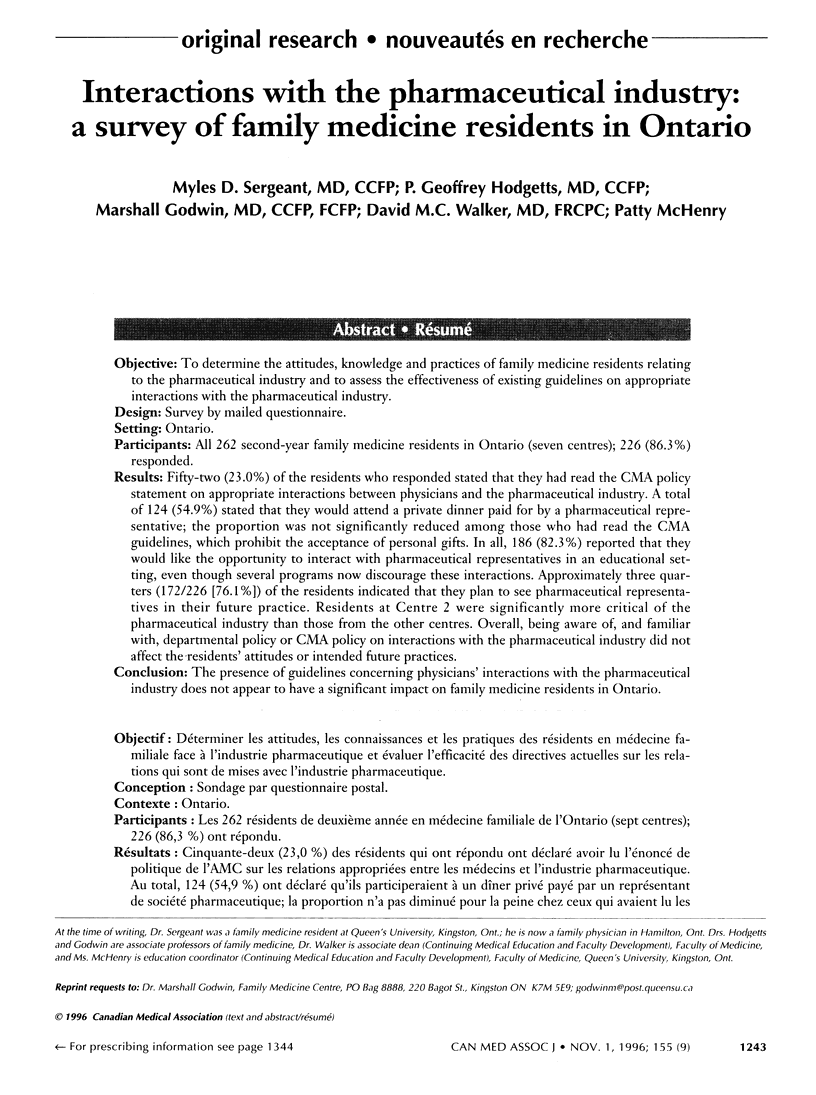
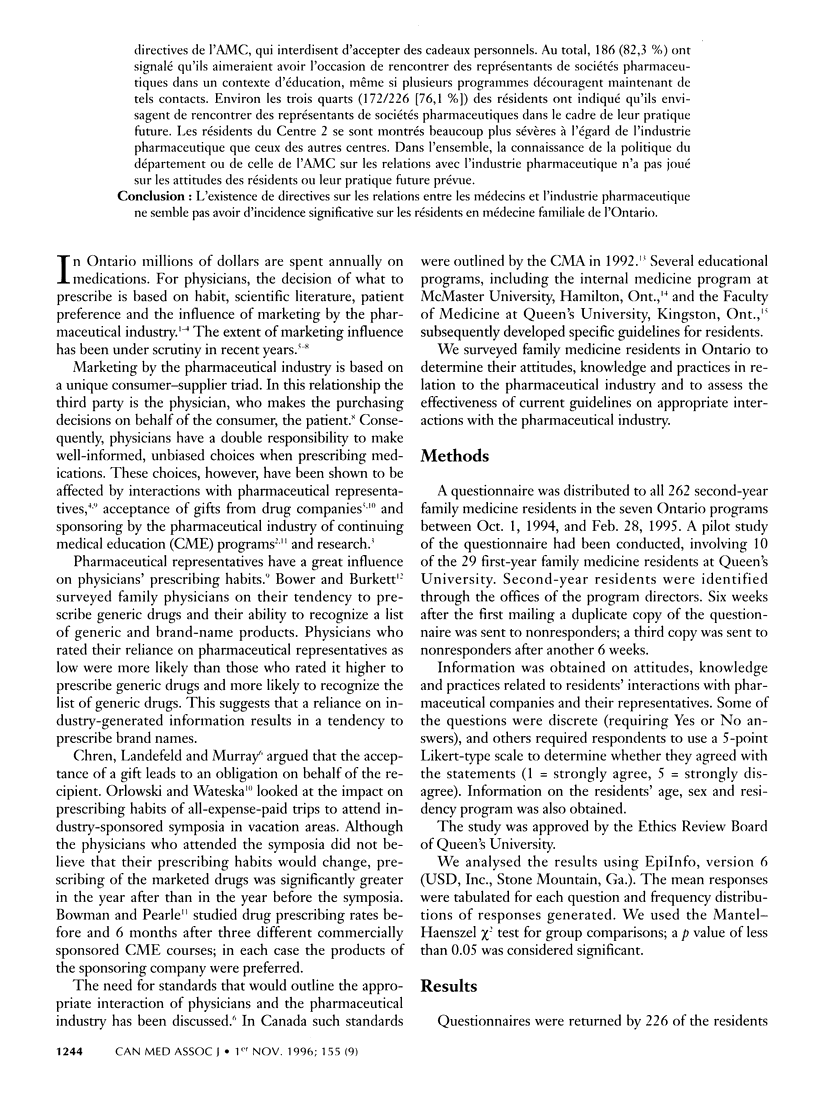
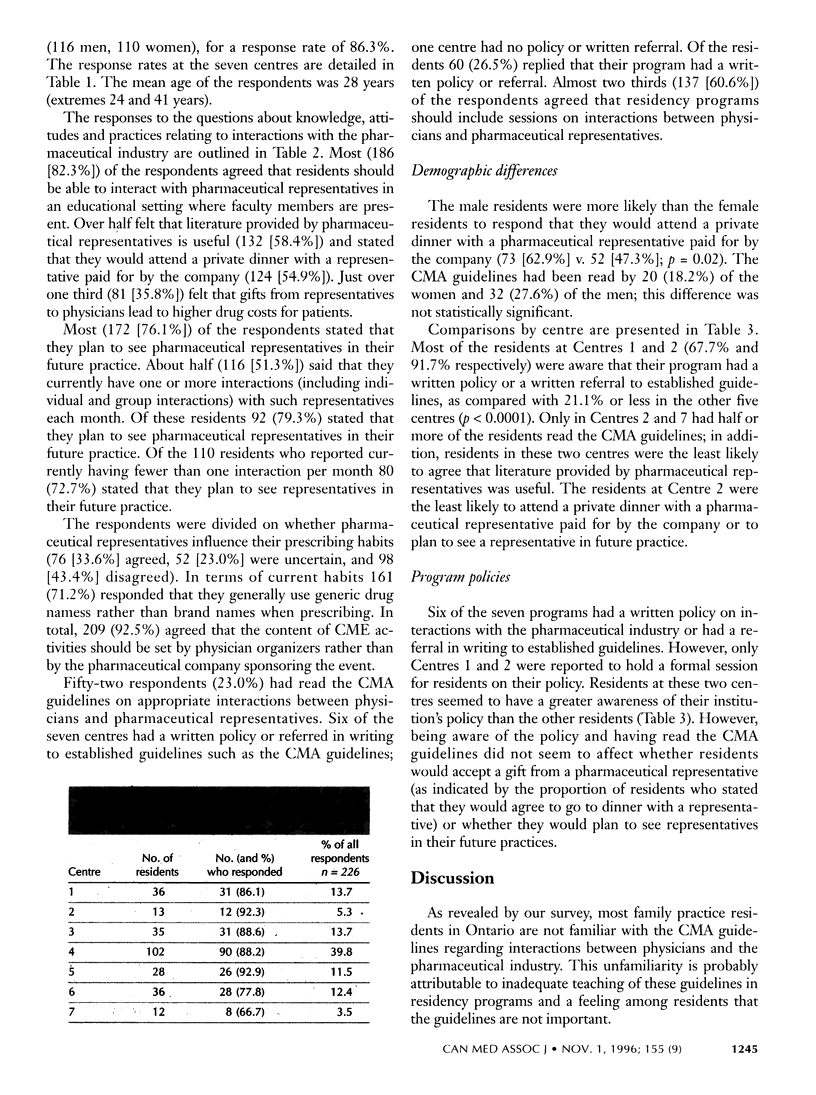
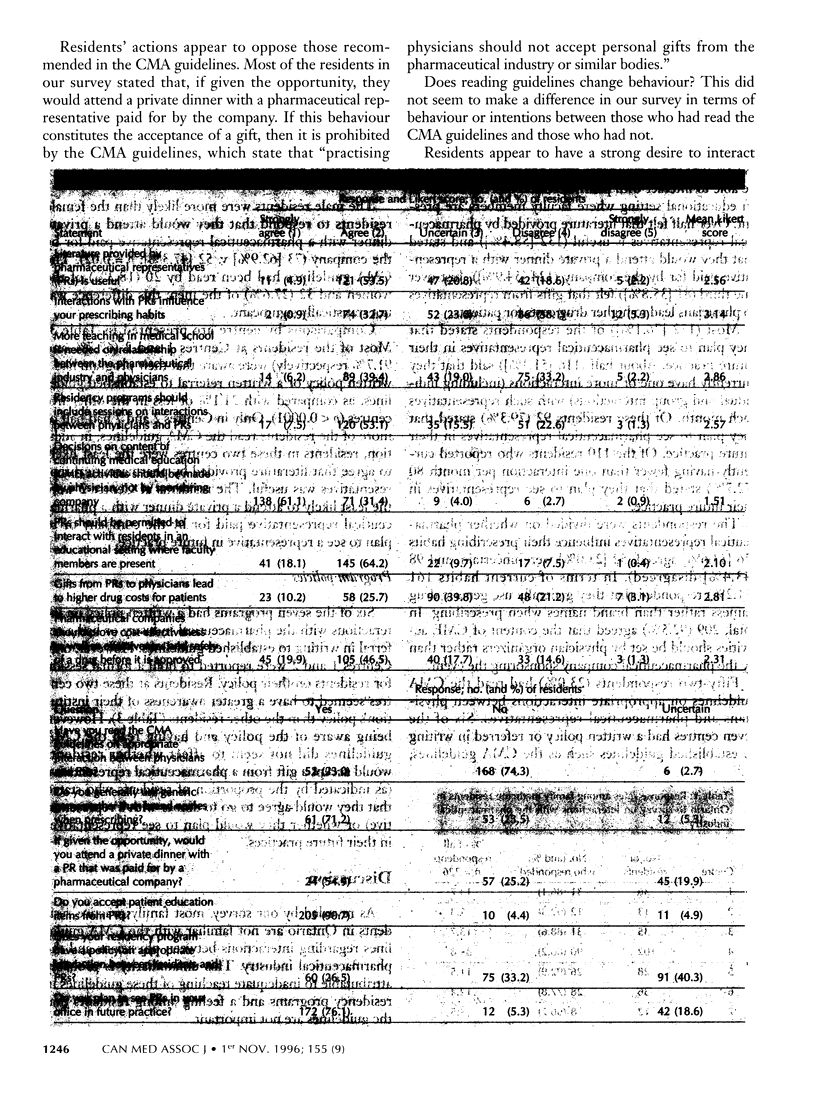
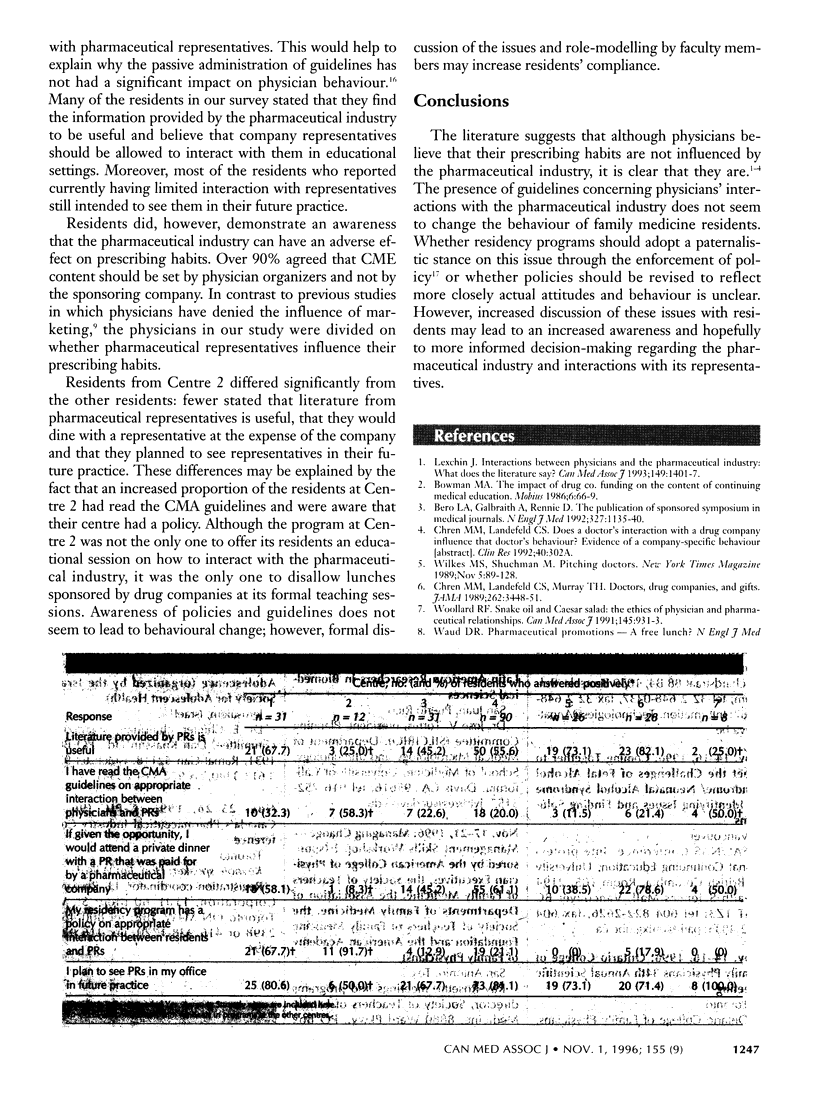
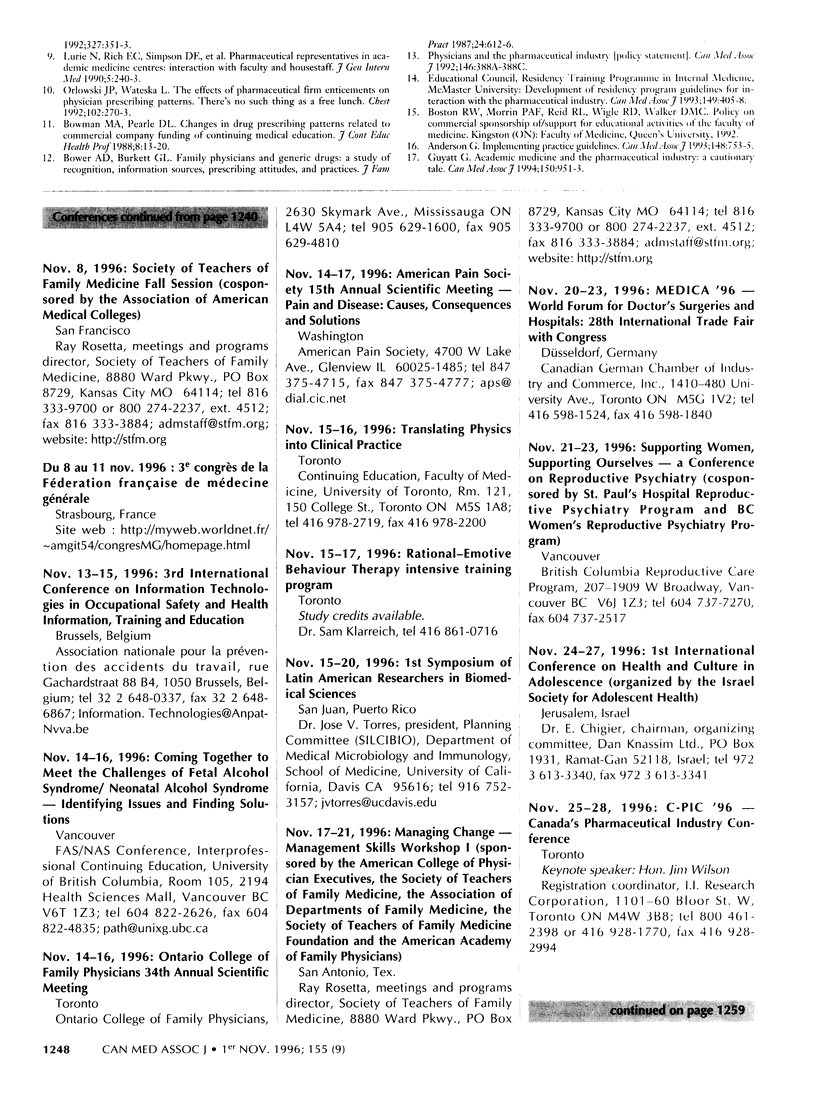
Selected References
These references are in PubMed. This may not be the complete list of references from this article.
- Bower A. D., Burkett G. L. Family physicians and generic drugs: a study of recognition, information sources, prescribing attitudes, and practices. J Fam Pract. 1987 Jun;24(6):612–616. [PubMed] [Google Scholar]
- Bowman M. A., Pearle D. L. Changes in drug prescribing patterns related to commercial company funding of continuing medical education. J Contin Educ Health Prof. 1988;8(1):13–20. doi: 10.1002/chp.4750080104. [DOI] [PubMed] [Google Scholar]
- Chren M. M., Landefeld C. S., Murray T. H. Doctors, drug companies, and gifts. JAMA. 1989 Dec 22;262(24):3448–3451. [PubMed] [Google Scholar]
- Lexchin J. Interactions between physicians and the pharmaceutical industry: what does the literature say? CMAJ. 1993 Nov 15;149(10):1401–1407. [PMC free article] [PubMed] [Google Scholar]


